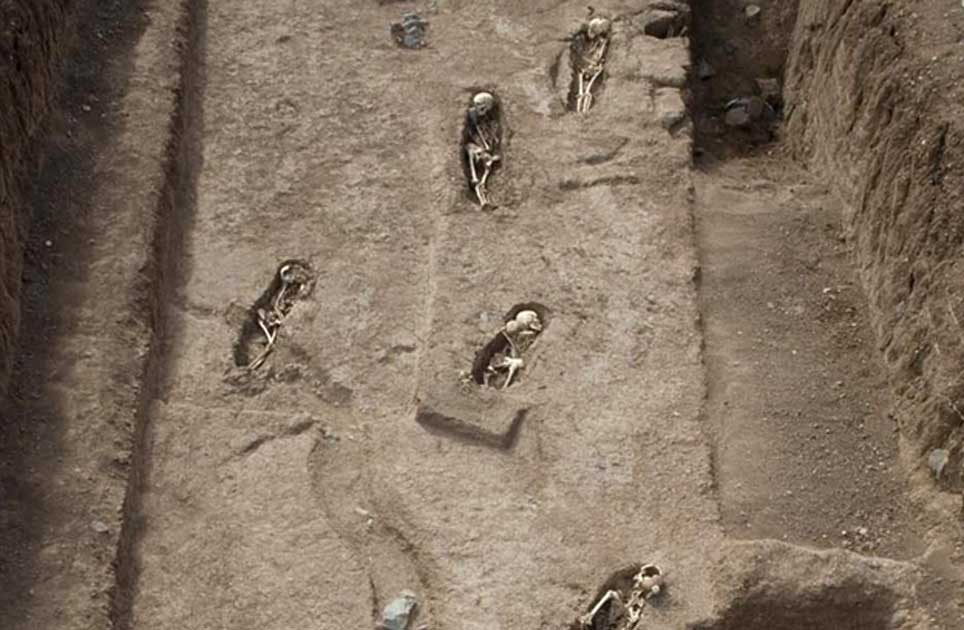World’s Oldest Slave Cemetery May Have Been Found
Archaeologists claim that the remains found in a burial site excavated in 2009 in the Canary Islands could be some of the earliest known slave remains in the world. They were originally thought to belong to predecessors of slaves trafficked from Africa to America and new information provides startling details about their tragic lives and deaths.
Transatlantic Slavery
The transatlantic slave trade was responsible for the forced migration of about fifteen million people from Africa to the Western Hemisphere (mainly the Americas) between 1501 and 1867.
The slave trade not only led to the violent transportation overseas of millions of Africans, but also to the deaths of many millions more. Nobody knows the total number of people who died during slave raiding and wars in Africa, during transportation and imprisonment, or in horrendous conditions during the so-called Middle Passage, the voyage from Africa to the Americas. Mortality rates could reach as high as up to 25% on each voyage.

Part of the slave cemetery discovered in Santa María de Guía, Gran Canaria. (EFE)
The kidnapping of Africans occurred mainly in the region that now stretches from Senegal to Angola. During the 16th century, this phenomenon was closely connected with the sugar industry, one of the main pillars of the new Atlantic economy. Although not alone, Britain was the world's leading slave trading power and it’s estimated that British ships were responsible for the forced transportation of at least 3 million Africans during the 18th century alone.
Sugar’s Unsweet Past
Despite how crazy it might sound for someone living today, it’s a historical fact that sugar shaped the world’s trade and economy for more than three centuries. The huge demand for labor to cultivate the massive sugar plantations in Brazil and the Caribbean became one of the main reasons behind the transatlantic slave trade.

Slaves cutting the sugar cane (1823) by William Clark. (Public Domain)
Many historians claim that modern-day banking and insurance can trace its origins to the 18th century Atlantic economy - during a period when slaves working the plantations suffered miserable lives and, in many cases, weren’t even treated as human beings by their masters. When they were finally emancipated in 1834 in the British Empire, it was the slave owners who were fully compensated – not the slaves. Much of this money was used to build Victorian infrastructure, such as railways and factories.
Identifying Some of the Earliest Victims of the Slave Trade
Fast forward to 2017, when a team of archaeologists have claimed that the remains found in a burial site on Gran Canaria, Spain, could belong to some of the world’s earliest slaves.
This shouldn’t surprise any history buffs, since the earliest Atlantic slave plantations were located in the Macaronesian archipelagos, including Madeira, the Canary Islands, and the Cape Verde Islands, at the central–eastern side of the Atlantic Ocean. Textual evidence has shown the existence of sugar cane plantations in these regions from the early middle 15th century.

Excavating the remains in Santa María de Guía (Gran Canaria), Spain. (José Guillén/ Tibicena)
The remains were originally thought to belong to predecessors of slaves trafficked from Africa to the Americas, but the identity of their origins has been unlocked with DNA extracted from their bones. The results show that the group of people consisted of a Canarian aboriginal woman, four black men, and another six bodies belonging to native groups of Europe and Africa.
“Given that there are many historical references to the slave trade in the Canaries, coming from North Africa, we think that these individuals were Moorish,” Rosa Fregel, a University Of Stanford biologist specializing in DNA from ancient populations explained to The Canary News.
- Nameless Immigrants and Slaves in Rome, Who Were They? Where Did They Come from?
- The Last of the Charrua: The Honored Warrior Tribe of Uruguay
University of Las Palmas de Gran Canaria archaeologist Jonathan Santana, one of the lead researchers, mentioned that the appearance of a Canarian aboriginal woman was odd, as the enslavement of indigenous Canarians had been prohibited before she died. He suggested that she may have been a mestizo instead.
The researchers found the people had died young (mostly in their twenties) and had spinal injuries similar to those previously documented from cane plantations in South Carolina, Suriname, and Barbados.

Slaves planting sugar cane. (1823) by William Clark. (Public Domain)
The individuals were all buried on their sides, but the style of burial differs from there: two of the bodies were placed facing East, some had glass beads, and a Francis of Assisi medal was discovered with one body. These differences suggest a mix of various religions and customs.
The team of investigators from the universities of Stanford (USA), Cambridge (UK), Santa Elena (Peru), Las Palmas, the Basque Country and the Archaeological specialist company, Tibicena, published their findings in the “American Journal of Physical Anthropology”, declaring it the most ancient burial of slaves discovered in the Atlantic World. “It is the oldest slave cemetery in the Atlantic world, the earliest antecedent of the African diaspora which is known”, Santana told The Canary News.
The researchers hope to receive additional funding to excavate more of the site because they believe there are other individuals still buried at the slave cemetery.

One of the individuals in the cemetery in Santa María de Guía, Gran Canaria. (EFE)
Top Image: Detail of some of the burials found at the slave cemetery in the Canary Islands. Source: EFE


















Comments
Misleading title ... you mean oldest cemetery of the colonial slave trade, we have plenty of ancient slave burials that are well documented for Roman Imperial, Greek City State and Egypt [not to mention Warring States Chinese era] that well predate this cemetery ...